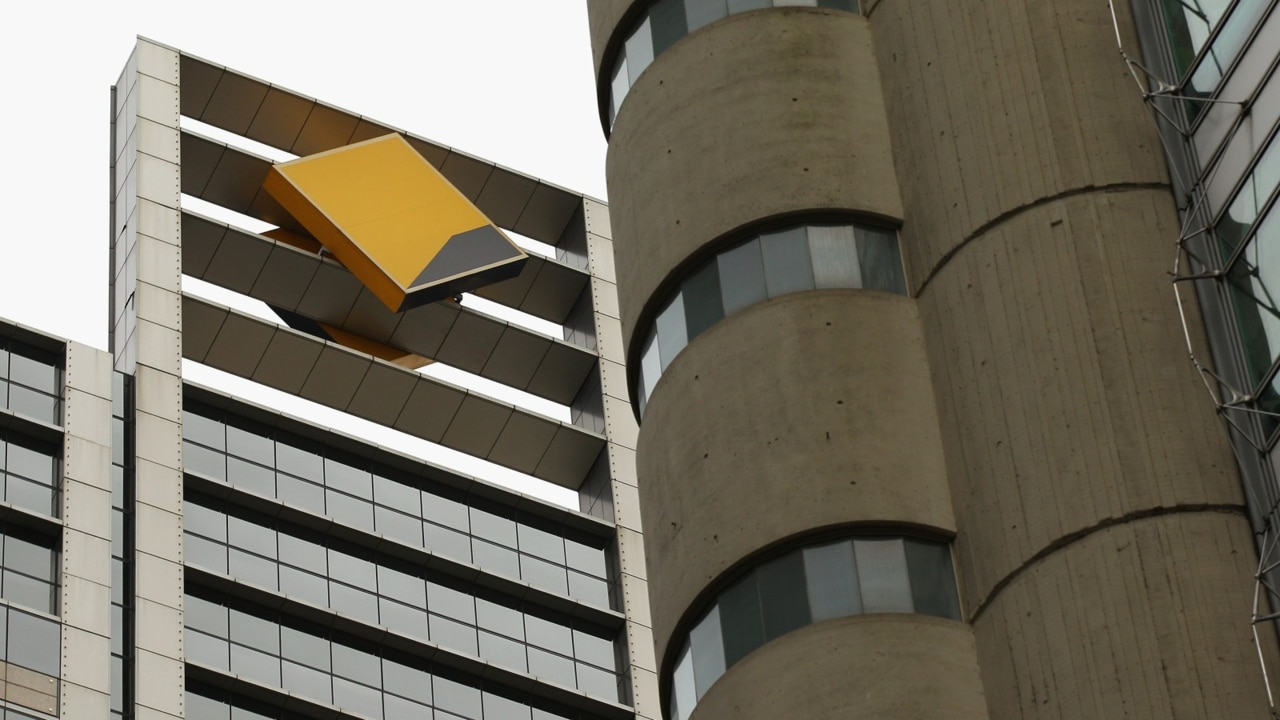More optimistic CBA expects soft landing, eyes interest rate cuts amid record cash profit
CBA chief executive Matt Comyn says Australia is on track for a soft landing as the bank factors in rates falling by June.

Commonwealth Bank executives feel a lot more certain about a soft landing for Australia than six months ago, announcing higher dividend payments and a $1bn buyback as they expect interest rate cuts by mid next year.
Speaking after CBA reported a record $10.2bn full year profit boosted by the fastest increase in the cash rate in living memory, chief executive Matt Comyn told The Australian the bank was now more “optimistic” about the outlook for rates than peers.
Mr Comyn said most of the bank’s borrowers would be able to handle the full impact of the recent cash rate increases over the next six months, although many were finding it “very tough”.
“We are very conscious that many Australians are feeling under pressure as a function of inflation and higher rates and higher increases in the number of household expenses,” he said.
However, the “actual number of customers that are falling behind and their repayments is very small,” he added.
While most economists expect sticky inflation means the Reserve Bank could increase interest rates once more before they start cutting, CBA says the impact of previous increases on economic activity and inflation would be enough to convince it otherwise.
With about a third of the full impact of 12 rate hikes yet to be fully felt by households, Australia’s economy will continue slowing but will remain in positive territory in the coming year, according to its economic team.
That will drive inflation close to the RBA’s 2-to-3 per cent target as soon as next year, which would convince it to cut rates 50 basis points to 3.60 per cent by mid 2024.
“Our economic team is forecasting that a little earlier than that some. Perhaps we were a little optimistic about the potential for rate cuts slightly earlier than others,” Mr Comyn said.
Australia’s largest home lender expects dwelling prices will rise between 3 and 5 per cent this year and a further 4 per cent in 2024.
The bank’s decision to use its capital to reward investors also reflects its comfort with the outlook, as well as its relatively large provisions for bad debts and high capital surplus.
“There is a risk that if inflation is more persistent than it’s forecasted, there could be additional rate hikes (but) we don’t think that’s going to happen in the near term,” he said.
The bank increased the probability of a “central or positive” economic scenario when deciding to increase its provision for bad debt charges to a 57.5 per cent chance, up from 52.5 per cent last year.
That scenario, which reflects its economists views as well as management judgements, factors in GDP growth of 1.4 per cent in 2024 and 1.7 per cent in 2025, with unemployment rising to 4.4 and 4.5 per cent respectively.
Chief financial officer Alan Docherty told analysts in a call the tweak was a result of having more conviction about the outlook for interest rates.
“Six months ago there was a greater degree of uncertainty around, particularly over the terminal cash rate in Australia. We feel … that we are closer to the end of the rate cycle at this point, and so I think we’ve got more confidence about the terminal cash rate.”
Cash earnings for the year ended June 30 were up 6 per cent to $10.16bn, boosted by elevated interest rates on home and business loans, and despite higher bad loan provision charges that reflect its expectation of rising mortgage stress.

That was the highest on record for an Australian bank, and beat the $10bn expected by investment analysts polled by Visible Alpha.
Its business banking unit was a star performer with a bumper 32 per cent increase in cash earnings for the year to $3.97bn, while earnings at its largest unit, retail banking, came in 5 per cent higher at $5.19bn.
Business loan volumes were up 11.4 per cent – 1.4 times higher than the broader industry – with the unit now banking one in every four Australian businesses.
Mr Comyn said the economy was slowing down, but the cash rate hikes had achieved their intended objective of controlling inflation.
“We believe we are near the end of the rate hike cycle, but that rates may stay high for some months to come. The fundamentals of the Australian economy remain strong, the jobs market remains tight with unemployment still near historic lows,” Mr Comyn said.
“However, there are signs of downside risks building. Even though wages are rising, the combination of higher inflation and higher interest repayments has meant that real household disposable incomes have fallen around 5 per cent year-on-year.”

The crunch was not being felt evenly, however, with younger people doing much tougher than older Australians.
Economists from Barrenjoey said CBA’s disclosures reflected the “per capita” outlook for consumption was actually negative.
“The outlook for per capita consumption is very weak,” Barrenjoey chief economist Jo Masters said. Analysing the CBA disclosures by age groups and factoring in population growth and still elevated inflation, “this result implies negative real spending per capita,” she said.
CBA executives warned that as consumers turn to savers, the battle for deposits was sure to intensify.
Bad debt charges surged to $1.1bn from a net benefit of $357m last year as the economy recovered from the pandemic.
The jump also reflected some deterioration in credit quality, as more borrowers – about two thirds – are now feeling the impact of the 4.0 percentage points in rate hikes since May 2022. That is because repayments don’t increase immediately and due to a high level of cheap fixed rate loans that will mature over the next six months and reset at much higher rates.
Mortgage delinquencies exceeding 90 days rose slightly to 0.47 per cent from 0.44 per cent at the end of March, remaining near historical lows and reflecting Australia’s strong employment and high levels of savings and repayment buffers.
About 1.19 per cent were now behind their personal loans repayments, up from 1.09 per cent the previous quarter.
The bank’s common equity tier one ratio was at 12.2 per cent at June 30, allowing it to announce a further $1bn buyback on top of the $3bn buybacks it completed during the year, a boon for investors. Dividend payments were 17 per cent higher at $4.5 per share.
“It has been an increasingly challenging period for our customers,” Mr Comyn said. “Our balance sheet resilience allows us to support our customers and deliver sustainable returns for shareholders.”
Operating costs were 5 per cent higher, partly driven by higher wage inflation and information technology costs that only partly offset by productivity gains and lower occupancy costs.
Pre-provision earnings were slightly lower than in the previous half, driven by a 5 basis point squeeze in its net interest margin – the difference between what the bank earned on loans and what it paid for funds – from their recent 2.10 per cent peak in the previous half to 2.05 per cent.
But the operating performance for the year was still 16 per cent higher than a year earlier, with net interest margins 0.17 percentage points higher.
Shares in CBA, one of the world’s most expensive banks, were 2.74 per cent higher at $105.01 each, while the wider market closed slightly higher.
“CBA’s margin was not as bad as some feared, driving a relief rally today,” said Will Curtayne, a portfolio manager at Milford. “Competition still remains intense in the banking sector, but on the mortgage side there has been some improvement over the last couple of months.”







To join the conversation, please log in. Don't have an account? Register
Join the conversation, you are commenting as Logout